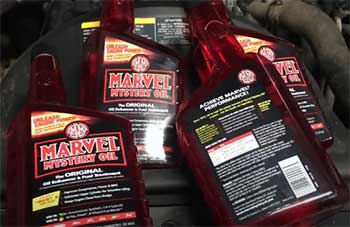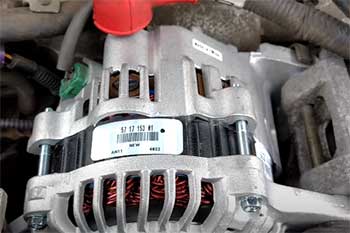As a car enthusiast, I’ve always been captivated by the raw power and elegance of Bugatti’s hypercars. The Bugatti Veyron and Chiron are not just vehicles; they’re engineering marvels that redefine speed and luxury.
In this article, I’ll take you through my analytical comparison of these two icons, exploring their performance, design, and features. You’ll find a detailed comparison table, pros and cons, and answers to common questions, helping you decide which hypercar reigns supreme. Join me on this thrilling ride to uncover what makes these machines legendary.
Comparison Table: Bugatti Chiron vs. Bugatti Veyron
| Feature | Bugatti Chiron | Bugatti Veyron |
|---|---|---|
| Engine | 8.0L Quad-Turbo W16 | 8.0L Quad-Turbo W16 |
| Horsepower | 1,479 hp (1,500 PS) | 1,001 hp (Super Sport: 1,184 hp) |
| Top Speed | 261 mph (limited), 304.77 mph (Super Sport 300+) | 253 mph (Super Sport: 267.86 mph) |
| 0-62 mph | < 2.5 seconds | 2.5 seconds |
| Torque | 1,180 lb-ft (1,600 Nm) | 922 lb-ft (Super Sport: 1,106 lb-ft) |
| Transmission | 7-speed dual-clutch | 7-speed dual-clutch |
| Weight | 4,398 lbs | 4,162 lbs |
| Price (Base) | $2.9 million | $1.7 million |
| Production Run | 500 units (2016–2024) | 450 units (2005–2015) |
| Interior Materials | Carbon fiber, leather, aluminum | Aluminum, leather, carbon fiber |
| Chassis | Carbon fiber monocoque | Carbon fiber monocoque |
| Fuel Consumption | 12.55 mpg (combined) | 10.45 mpg (combined) |
My First Encounter with Bugatti’s Legends
Walking into a Bugatti showroom feels like stepping into a cathedral of automotive art. The Veyron, with its sleek curves, and the Chiron, with its aggressive stance, both command attention. My first impression? The Veyron is a timeless classic, like a perfectly tailored suit, while the Chiron feels like a futuristic beast ready to pounce.
Both cars embody Bugatti’s ethos of blending luxury with mind-bending performance, but they cater to slightly different souls. Let me share my journey of comparing these two, breaking down their strengths, weaknesses, and what makes them tick.
Performance: The Heart of the Hypercar
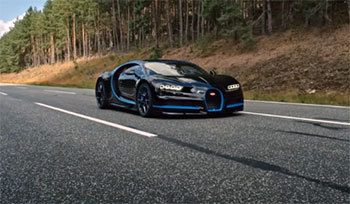
The beating heart of both the Veyron and Chiron is the 8.0-liter quad-turbocharged W16 engine—a mechanical symphony of 16 cylinders and four turbochargers.
When I first learned about the Veyron’s 1,001 horsepower, I was floored. Back in 2005, it was unheard of for a street-legal car to produce such power.
The Super Sport variant pushed it to 1,184 hp, hitting a record-breaking 267.86 mph.
I can only imagine the rush of flooring the pedal, feeling the world blur as the Veyron surges forward in just 2.5 seconds to 62 mph.
Then came the Chiron in 2016, and Bugatti didn’t just tweak the formula—they rewrote it. With 1,479 hp (1,500 PS in some variants), the Chiron feels like it’s bending the laws of physics. Its top speed is electronically limited to 261 mph for safety, but the Chiron Super Sport 300+ shattered records by hitting 304.77 mph in 2019.
I read about test driver Andy Wallace’s run at Volkswagen’s Ehra-Lessien facility, and the idea of sustaining that speed for even a moment is mind-boggling. The Chiron’s 0-62 mph time dips below 2.5 seconds, and it reaches 186 mph in just 13.6 seconds—faster than most cars hit 100 mph.
The Chiron’s torque, peaking at 1,180 lb-ft, gives it a relentless pull, making it feel like a rocket on wheels. The Veyron, with 922 lb-ft (1,106 lb-ft in Super Sport), is no slouch, but it lacks the Chiron’s ferocity.
Both use a seven-speed dual-clutch transmission, shifting gears in under 150 milliseconds, but the Chiron’s setup feels more refined, thanks to 11 years of engineering advancements. I’d love to experience the Chiron’s seamless power delivery on an open road, but the Veyron’s raw, unfiltered surge still has a charm that’s hard to beat.
Design: Classic Elegance vs. Futuristic Aggression
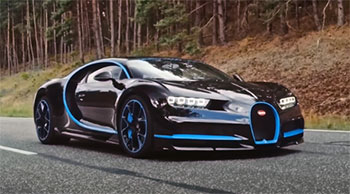
Standing beside a Veyron, I’m struck by its compact, almost understated elegance.
Its rounded lines and two-tone color schemes nod to Bugatti’s heritage, like the Type 46 and Type 57SC Atlantic.
The Veyron’s design, crafted by Jozef Kabaň, feels timeless, but some critics—like those at Top Speed—call it “a potato on wheels.”
I disagree; there’s a refined simplicity to its curves that grows on you.
The Chiron, on the other hand, is a visual assault. Its “Bugatti Line,” a sweeping C-shaped curve, defines the cockpit and channels air to the engine, blending form and function.
The sharper lines and batmobile-like hood scream modern aggression. When I saw the Chiron at the 2016 Geneva Motor Show (albeit through videos), its presence was undeniable. The headlight recesses, designed to cool the massive brakes, add a functional beauty that the Veyron lacks.
Both cars use carbon fiber monocoques, but the Chiron’s chassis is stiffer, rivaling Le Mans race cars. This rigidity enhances handling, making the Chiron feel more planted at high speeds.
The Veyron’s design, while groundbreaking in 2005, feels less aerodynamic by today’s standards. If I had to pick, the Chiron’s futuristic aesthetic wins for its bold statement, but the Veyron’s classic charm holds a special place in my heart.
Interior: Luxury That Rivals Private Jets
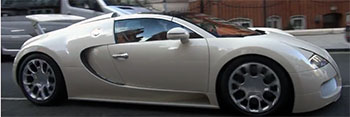
Sliding into the Veyron’s cabin, I’m greeted by an aluminum center console that costs more than some cars.
The leather and carbon fiber accents exude opulence, and the analog dials, including a power meter showing horsepower usage, feel like a nod to vintage craftsmanship.
The Veyron’s interior is minimalist yet elegant, with a focus on timeless luxury. I can imagine cruising through Monaco, the Burmester sound system filling the cabin with crystal-clear audio.
The Chiron takes luxury to another level. Its carbon fiber airbag housing—a world first—and the single-sweep design from windscreen to dashboard create a seamless, futuristic vibe.
The blade-like center stack with digital displays feels like a race car cockpit, and the 311-mph speedometer dares you to push the limits. I read about the Chiron’s adaptive hydraulic dampers, which adjust for comfort or performance, making it as versatile as it is luxurious.
Comparing the two, the Veyron’s simplicity feels more intimate, while the Chiron’s tech-heavy approach caters to modern tastes. If I were choosing for a cross-country drive, the Chiron’s refined comfort might edge out, but the Veyron’s classic elegance is hard to resist for a Sunday cruise.
Read More: My Thoughts On Acura MDX Vs. Volvo XC90
Handling and Driveability: Taming the Beast
Driving a Bugatti isn’t just about speed; it’s about control. The Veyron’s all-wheel-drive system, paired with a Haldex traction setup, makes it surprisingly easy to drive at low speeds.
I’ve heard stories of owners navigating city streets with ease, switching to “Standard” mode to soften the suspension. On the track, the Veyron’s grip is relentless, but its 4,162-pound weight makes it feel like a luxury liner compared to lighter supercars.
The Chiron, despite weighing 4,398 pounds, feels nimbler. Its advanced suspension and electronic differentials offer precise handling, especially in models like the Chiron Pur Sport, which has stiffer springs and negative camber for cornering prowess.
I can imagine carving through an Alpine pass in the Chiron, its adaptive chassis responding to every input. The Veyron handles well, but the Chiron’s refinements make it a more confidence-inspiring driver’s car.
Pros and Cons: Weighing the Titans
Bugatti Veyron Pros
- Historical Significance: The Veyron redefined hypercars in 2005, setting speed records that inspired the industry.
- Timeless Design: Its elegant, understated look ages gracefully, appealing to those who value classic aesthetics.
- Collectibility: With only 450 units produced, it’s rarer than the Chiron, potentially increasing its value over time.
- Raw Driving Experience: The Veyron’s unfiltered power delivery feels more visceral, perfect for purists.
Bugatti Veyron Cons
- Outdated Performance: With 1,001 hp (1,184 hp in Super Sport), it’s outclassed by the Chiron’s 1,479 hp.
- Less Refined Handling: The Veyron’s suspension and aerodynamics are less advanced, making it feel heavier in corners.
- Fuel Efficiency: At 10.45 mpg combined, it’s thirstier than the Chiron, though neither is economical.
- Interior Tech: The analog-heavy cabin lacks the modern tech of the Chiron.
Bugatti Chiron Pros
- Unmatched Performance: 1,479 hp and a 304.77 mph top speed (Super Sport 300+) make it a record-breaker.
- Advanced Technology: From adaptive suspension to digital displays, the Chiron feels cutting-edge.
- Improved Handling: Stiffer chassis and refined aerodynamics offer superior control at high speeds.
- Luxurious Interior: The futuristic cabin, with premium materials, elevates the driving experience.
Bugatti Chiron Cons
- Higher Price Tag: Starting at $2.9 million, it’s significantly more expensive than the Veyron’s $1.7 million.
- Less Collectible: With 500 units, it’s slightly less rare than the Veyron, potentially affecting future value.
- Complexity: The tech-heavy design might overwhelm those who prefer a simpler driving experience.
- Weight: At 4,398 pounds, it’s heavier than the Veyron, though handling mitigates this.
Key Features That Define Each Hypercar
The Veyron’s standout feature is its pioneering spirit. As the first production car to break 250 mph, it set the stage for modern hypercars. Its quad-turbo W16 engine, developed under Volkswagen’s guidance, was a marvel, producing a sound like a jet taking off. The Burmester audio system and customizable color options via the 2010 Configurator added a personal touch.
The Chiron’s key features include its record-breaking speed, thanks to the Super Sport 300+ variant, and its advanced aerodynamics. The “Bugatti Line” and carbon fiber monocoque enhance both style and stability. The adaptive chassis and Michelin Pilot Sport Cup 2 R tires (in Pur Sport models) make it a driver’s dream, while the deployable rear wing doubles as an air brake.
The Emotional Connection: Why These Cars Matter
Owning a Bugatti isn’t just about specs; it’s about the experience. The Veyron, named after racing driver Pierre Veyron, feels like a tribute to Bugatti’s storied past. Driving one, I’d imagine channeling the spirit of the 1939 Le Mans victory. The Chiron, named after Louis Chiron, evokes the glamour of Monaco’s Grand Prix. Both cars are more than machines—they’re dreams realized.
I’ve spoken to enthusiasts on forums like Reddit, where opinions split. Some, like user jonis_123, prefer the Veyron’s raw charm, calling it “a track car with a jet engine.” Others argue the Chiron’s refinement makes it “a Rolls-Royce with a jet engine.” For me, the Veyron’s historical weight resonates, but the Chiron’s performance edge is undeniable.
The Cost of Exclusivity
Price is where the Chiron pulls ahead—or falls behind, depending on your perspective. The Veyron started at $1.7 million, with used examples now often exceeding $1 million due to their rarity. Special editions, like the $2.9 million gold-and-diamond 1:18 scale replica, highlight its collectible status. The Chiron, starting at $2.9 million, demands a $200,000 deposit, and limited editions like La Voiture Noire fetch up to $18.9 million.
For most of us, these prices are pure fantasy. But if I had the means, the Veyron’s lower entry point and historical significance might sway me, though the Chiron’s performance makes it tempting. It’s a choice between a legend and its successor.
The Future of Bugatti: A Nod to the Tourbillon
As I write this in July 2025, Bugatti’s newest hypercar, the Tourbillon, looms on the horizon. With a hybrid V16 engine producing 1,775 hp, it promises to outshine both the Veyron and Chiron. Its lighter weight and innovative design signal a new era, but for now, the Veyron and Chiron remain the benchmarks. I can’t wait to see how the Tourbillon stacks up, but it’s clear Bugatti’s legacy of pushing boundaries continues.
Read More: My Thoughts On Acura MDX Vs. Lexus GX
Frequently Asked Questions (FAQ)
The Chiron is better for performance and modern tech, with 1,479 hp and superior handling. The Veyron excels in historical significance and classic design, appealing to purists.
The Chiron Super Sport 300+ is the fastest, reaching 304.77 mph in 2019, verified by TÜV.
The Koenigsegg Regera surpassed the Chiron’s 0-400-0 km/h record in 2017, though the Chiron later reclaimed the top speed record.
The Chiron La Voiture Noire, a one-off model, is the most expensive at $18.9 million.
Conclusion: Which Bugatti Steals Your Heart?
As I wrap up this journey, I’m torn. The Veyron, with its groundbreaking legacy and elegant simplicity, feels like a piece of history you can drive. The Chiron, with its unmatched power and futuristic flair, is the pinnacle of modern engineering. You might lean toward the Veyron for its raw charm and collectibility, or you might crave the Chiron’s blistering speed and tech. Whichever you choose, both cars are monuments to what’s possible when passion meets precision. So, tell me—what’s your pick, and why?
